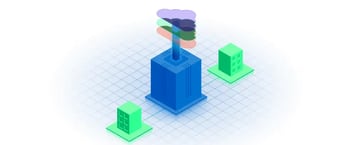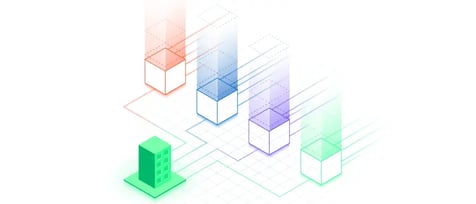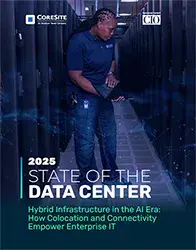
No Turning Back The Digital Clock: Why Data Centers Matter Far More Than You Think
Recently, while I was taking an Uber from the airport, my driver told me he’d been reading some articles about data centers. “They’re baaaad,” he said ominously. We then discussed how the applications he was utilizing at that moment, including Apple CarPlay and the Uber app, rely on data centers to operate.
Editors’ Note: This article was originally published in the Forbes Technology Council forum and can be found here.

The reality in 2025 is that the vast majority of our daily activities are supported by data centers. Any time you use a smartphone, make a wire transfer, check your bank account, send an email or scroll through social media, data centers power those actions.
And this isn’t only true of digital-native companies. Brick-and-mortar businesses, from your local grocery store to big box shops like Walmart or Home Depot, rely heavily on data centers for their operations, as does almost every part of our economy, from logistics to retail to healthcare. Data center integration today is society-wide; there are virtually no exceptions.
Addressing The ‘NIMBY’ Movement
Despite their prevalence and importance to daily life, data centers remain misunderstood. I believe this is, at least in part, a product of the rapid proliferation of data center construction since the 2010s, when the cloud emerged as a major force. Companies started using the cloud seemingly overnight—so there’s the sense that one morning people woke up and data centers were everywhere (especially in places like Northern Virginia or Silicon Valley).
Then, stories started to emerge about data center power consumption, including whether data centers may increase utility bills for consumers or otherwise strain the power grid. That’s when the “NIMBY”—not in my backyard—sentiment started to take root; and as a result, local jurisdictions began opposing new data center developments, notwithstanding that data centers can be built only in commercially zoned areas.
At times, people complain about data centers without really knowing what they are or what they do. Some focus only on the negatives—“I don’t want a big, non-descript building in my community”—without comprehending the role that data centers play in society.
Dispelling Popular Misconceptions
To be fair, in the early days of data center construction, the industry focused largely on function without regard to aesthetics. If you drive through Northern Virginia, you may see massive, plain concrete buildings that look much like warehouses. That’s now changing. Data center providers are doing more to integrate themselves into the communities in which they operate by ensuring designs are both attractive and functional. But as my conversation with the Uber driver illustrates, folks have an array of objections to and misconceptions about data centers beyond their lack of curb appeal, including:
Data centers pollute the air. Many of the sites we build on are repurposed from far worse use cases, especially from an air pollution standpoint. Data centers, by comparison, are relatively clean. The misconception comes from the presence of diesel generators, but these generators are infrequently used for emergency backup or when utility companies ask us to help offload demand during peak summer usage to support the power grid.Prior to shifting IT load to data centers, many businesses housed servers in much less efficient and reliable environments, such as in an extra room in their offices. Data centers have allowed businesses to operate their IT equipment as efficiently as possible as compared to other alternatives.
Also, many of us in the industry have been leaders in adopting renewable energy. The major cloud companies—Google, Amazon, Microsoft—all have aggressive carbon footprint reduction pledges. We’re all pushing utilities to be greener; it’s a huge part of our strategy and operations.
Data centers can be built anywhere—so why here? That depends on the type of data center and the use case. For example, if a company is training a large language model, like Grok or ChatGPT, one of the most important factors is cheap, abundant power. Those kinds of facilities can be located almost anywhere.But once the model is trained and it’s time for end users to start querying it (that is, engaging in what’s termed “inference”), then location matters. You want that infrastructure to be as close to the user as possible to reduce latency.
The same is true of digital media such as video streaming, social media and enterprise applications. These services require low latency, so proximity to population centers becomes critical. That’s why you see clusters of data centers in and around metro areas.
Data centers’ resource consumption outweighs the benefits they create. As I told my driver, almost all of the economy is now digital. Many of our daily activities, from sending emails to making phone calls, rely on servers, which are housed in data centers. Many of these facilities are purpose-built to operate efficiently, at scale and with proper network interconnection.They’ve also become mission critical. In emergencies, we depend on our digital infrastructure, including 911 dispatch, hospital systems, and emergency notifications. Without functioning data centers, many of these services would not work.
Data centers with carrier hotel legacy have lost relevance. Carrier hotels, or what we now call “interconnection hubs,” are critical to the digital economy. Carrier hotels are data center facilities where multiple different digital platforms interconnect and exchange traffic.
No digital service exists in a vacuum. Everything is connected. If you’re a digital media company like Disney, you need access to broadband networks to deliver your content and to access compute resources for rendering and storage.
This is an ecosystem. Ecosystems thrive on interconnection, and that happens in carrier hotels, where all these networks and platforms meet. Think of it like this: If you had a laptop but no internet, you could do great work, but it would be hard to share it. It’s the same idea at the enterprise level. Interconnection is what makes everything function.
An Economic Development Boon
It’s also important to note that data centers yield an array of positive economic impacts for their local communities. First of all, data centers create high-paying jobs. For example, when our company qualified for the sales and use tax incentive in Virginia, we were able to demonstrate that we created 50 net-new jobs that paid 50% above the median salary for Fairfax County. Fairfax has one of the highest median incomes in the country, and we still met that threshold.
Importantly, the jobs we create don’t always require a college degree, providing employees from different training and educational backgrounds with great career paths and development opportunities. (In fact, we fund scholarships at local colleges and host interns to support education pathways for these jobs.) In addition to direct jobs, we’re in constant construction mode, with crews of 100-200 people on any given site rotating from one data center project to another. So, while our buildings don’t house as many employees as traditional offices, due to our well-paying jobs and collateral job creation, the jobs we enable pay significant income tax revenue without notably straining public transportation infrastructure.
And speaking of taxes: What many people don’t realize is that we help keep property taxes in check. Data centers pay significantly more in property taxes than regular office buildings because jurisdictions tax based on how much capital is invested; data centers typically have many times the capital investment of other commercial properties.
Pushing Through Bottlenecks
Ultimately, a lot of the concern about data centers is related to general anxiety about limited resources. Power is the number one bottleneck across the industry right now, largely due to the shift to GPU-based architectures that are more power-intensive. It’s a reality we all have to adapt to.
AI will deliver unbelievable productivity gains, but it’s going to require a whole new rate of power generation. Utility companies will eventually rise to the challenge, though it could take time. You’re already hearing discussions about small modular nuclear reactors and similar innovations. That’s a longer-term solution, of course, as there are still technical and regulatory hurdles to clear.
In the meantime, we’re dealing with underinvestment in the grid, especially after years of stagnant demand for power. But now, with AI, electric vehicles, chip manufacturing reshoring and other power-hungry applications, power demand is surging. And we’re all competing for that limited capacity, precisely because it is mission-critical to our digital world.
One thing is for sure: There’s no turning back the digital clock. Data centers are the foundation—the very backbone—of the infrastructure upon which we’ve become dependent for many aspects of our lives. The services housed in data centers make us more connected and more productive in ways we can hardly imagine doing without and on which we likely will become increasingly more reliant in the years ahead.
Know More
Now in its sixth year, the 2025 State of the Data Center research, conducted by Foundry, surveyed 300 CIOs, CTOs and other IT decision-makers representing a variety of industry sectors. In addition to the online survey, Foundry conducted in-depth interviews with seven senior technology executives from enterprise organizations in the financial services, healthcare, retail and software-as-a-service (SaaS) sectors. Quotes from those interviews are included throughout the report, with the understanding that subjects would not be identified by name or company so they could speak freely about their data center strategies.
Download, read and share the 2025 State of the Data Center report.
Of course, we are ready to discuss your business and infrastructure objectives.
Contact Us to get the conversation rolling!











